In 1838 the Reverend John B. Johnston (1802-1882), the Scots-Irish pastor of the Reformed Presbyterian Church in Northwood, Logan County, Ohio, began teaching young men the ways of his faith. This endeavor was the idea of his brother James S. Johnston, a store owner in nearby New Richland. The Reverend Johnston’s lessons became quite popular in the local area and were expanded in the coming years.
This led to the founding of a Christian educational academy known as Geneva Hall that officially opened on Thursday, April 28, 1848. Reports indicate the school soon had about seventy-five pupils. The institution was named in honor of Geneva, Switzerland, at one time the leading center of the Reformed Presbyterian (or Covenanter) movement.
Classes were initially held in a two-story building that was soon expanded with an additional floor. In 1852 the Geneva Female Seminary, a separate institution for women, was opened on the third floor. It is believed that a handful of students participated in the Underground Railroad, secretly assisting African-American slaves as they escaped to the north.
Johnston served as the school’s first president until 1850, when he was succeeded by the Reverend William F. George from 1850-1852. Future presidents included James Sloane from 1852-1856, John Milligan from 1856-1858, John C. Smith from 1858-1860, Nathan R. Johnston from 1865-1867, Samuel J. Crowe from 1867-1871, and William Milroy from 1871-1872.
The college was closed in the early 1860’s due to the events of the Civil War, but reopened in 1865. The institution was in dire financial straits but managed to stay afloat. Geneva Hall was truly revolutionary as it began admitting freed slaves and consolidated its men’s and women’s classes to embark on the path of co-educational instruction. In 1872 the Reverend Henry Hosick George (1833-1914), a 1853 graduate of the college, took over as president and would serve it that capacity for the next eighteen years. Soon after he assumed the post the institution was renamed as Geneva College.
During the 1870’s the administrators, seeking to move to a more urban location, began searching for a suitable site. After considering several areas it was eventually decided in 1879 to relocate to Borough of Beaver Falls, Pennsylvania, a growing industrial community located north of Pittsburgh. The economy-minded Harmony Society, a German religious group that founded Beaver Falls, had generously donated a ten-acre property north of the borough. The community also promised funds to help construct a new campus but progress was slow. When classes opened in Beaver Falls in mid-September 1880 they were held in the Reformed Presbyterian Church on Seventh Avenue.
In the fall of 1881 the first building, known as Old Main, was opened for classes on the new campus. It was designed by Pittsburgh-based architect James P. Bailey, who also designed the Butler County Court House which opened in 1885. Progress on expanding the campus was slow and within the two decades only a few major structures were built – a student dormitory known as North Hall and a small wooden frame gymnasium.
A Science Building was completed in 1897, but was lost to a fire in the fall of 1912. The New Castle News of Saturday, August 10, 1912, mentioned, “Fire of unknown origin today destroyed the Science hall of Geneva college, causing loss of $15,000. The bucket brigade had to be abandoned because of the presence of explosive chemicals.” The foundation was used to erect a new Science Building, containing the Clark Chemical Laboratory and Mary Thompson Science Hall, which was opened in 1914.
During that same time the settlement of Beaver Falls doubled in population to exceed 10,000 people by 1900. A thriving neighborhood, which became the independent Borough of College Hill in 1892, also blossomed around the campus. In 1910 a Pittsburgh & Lake Erie Railroad (P&LE) opened a passenger station along the Beaver River and just beside the school.
Geneva College established a football team in 1890 and one of its most notable stars was Cal Hubbard, who starred on the gridiron for the school in 1926. He subsequently played in the National Football League (NFL) from 1927-1936 and pioneered the position of linebacker. He also served as a Major League Baseball (MLB) umpire from 1936-1951. He is the only person ever inducted into both the Pro Football Hall Of Fame and the Baseball Hall Of Fame.
The school claims to be the “birthplace of college basketball,” as what may be the first ever official collegiate basketball game took place on campus on Saturday, April 8, 1893. During that game Geneva College defeated a squad from the New Brighton YMCA by a score of 3-0. Intramural basketball games were held on the campus as early as February 1892. Basketball was still in its infancy, as James Naismith had only invented it a few months prior while teaching physical education in Springfield, Massachusetts.
Over the years Geneva College developed an intense sports rivalry with Westminster College, an institution in nearby New Wilmington that is affiliated with the Presbyterian Church (USA). The sports teams were known by the nickname of the “Covenanters” or simply “Covies” until about 1959, when at that time they were re-christened as the “Golden Tornadoes.” The new nickname was in reference to a powerful storm that swept through the area in May 11, 1914, and ripped many of the shingles off the roof of Old Main.
Two of Western Pennsylvania’s most successful high school coaches had prior association with the college. Phil Bridenbaugh served as the head coach of the football team from 1917-1922. He departed to take over as head coach of New Castle High School, and amassed a record 265-65-25 and won seven WPIAL Class AA championships over the next thirty-five years. Larry Bruno, a football star who graduated from Geneva in 1947, became a legendary figure while coaching football at Monaca High School from 1949-1958 and Beaver Falls High School from 1959-1978.
Progress continued at a steady rate at the turn of the century. A promotional piece that appeared in the New Castle Herald of Friday, September 15, 1916, mentioned, “The outlook of Geneva College was never so full of promise as at the present time. Located in a prosperous and growing community which is easy of access by both steam and electric railways, with a physical plant and endowment valued at nearly half a million dollars, and daily increasing in value, a strong and carefully selected faculty of eighteen members, a good scientific, literary, musical and athletic equipment, a representative and growing body of students, an alumni association which is growing in numbers and influence, and an ever widening constituency, she has a bases for excellent work, and a strong ground for appeal to young men and women who desire a higher education.”
New buildings that were opened in the early 1900’s included Johnson Gymnasium in 1911, a women’s dormitory known as McKee Hall in 1921, and McCartney Library in 1931. These buildings were all designed by William G. Eckles, a prominent architect of local schools and churches who was based in New Castle. He also designed the entrance gates for Reeves Field, an athletic field that opened in 1929, and planned the renovations to Old Main that were carried out in 1935. Old Main would always occupy a central location on campus as various buildings were erected around it.
In 1948 the school celebrated the 100th anniversary of its founding. Under its fifteenth president, Dr. Edwin C. Clarke, who served from 1956-1980 (and on an interim basis from 1983-1984), the college experienced great prosperity. The original 10-acre campus was eventually expanded to fifty-five acres after various property acquisitions. The New Castle News of Wednesday, November 12, 1958, mentioned, “A long-range development program contemplated by Geneva College has been estimated at $1,250,000 and will include both new construction and remodeling of existing facilities.” During the 1960’s the plan led to the building of a new athletic field house, the addition of an engineering section to the Science Building, and the enlargement of McCartney Library.
In October 1967 the administrators adopted a philosophical code for the college that was called the Foundational Concepts of Christian Education. It read in part, “Christian education endeavors to develop each student’s capacity for the enjoyment of the world as God’s creation, in all its cultural richness, realizing that all of life as a coherent whole is related to God and His redemptive activity. The goal of Christian education is the development of mature students who, as individuals, have well-integrated personalities; and who, as well-oriented members of society, are building the kingdom of God in the family, the church, the nation and the world.”
Modernization efforts continued in the coming years. A long discussed project, rerouting a busy stretch of Route 18 that ran right through the heart of the campus, was finally carried out by the Pennsylvania Department of Transportation in 2007. The $7.5 million project brought more tranquility to Geneva College and at the same time other parts of the campus were greatly renovated.
Geneva College, a liberal arts school, is affiliated with the Reformed Presbyterian Church of North America (RPCNA), a Presbyterian denomination that traces its origin back to a congregation established in Lancaster County, Pennsylvania, in 1738. In early 2016 the distinguished Dr. Calvin L. Troup, a Geneva alumnus who graduated in 1983, was named as the twentieth president of the college. In April 2018 the thriving school, a major cornerstone of the Beaver Falls community, turned 170 years old.
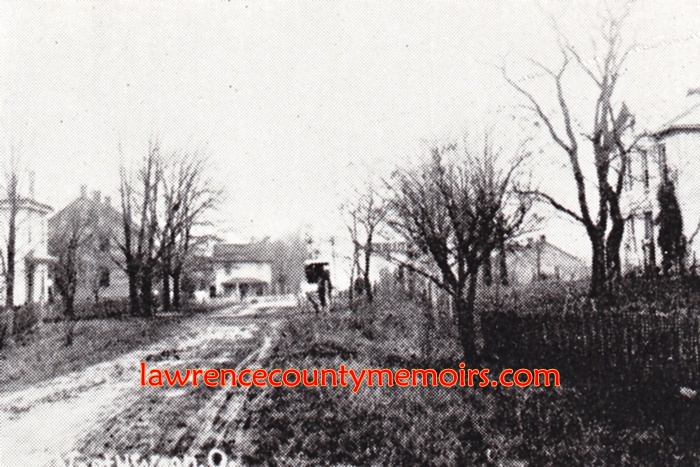 Geneva Hall, which became Geneva College in 1873, was founded in the small town of Northwood OH. (c1890) |
 A two-story building, soon expanded with an additional floor, was opened on the edge of town in 1848. (c1870) |
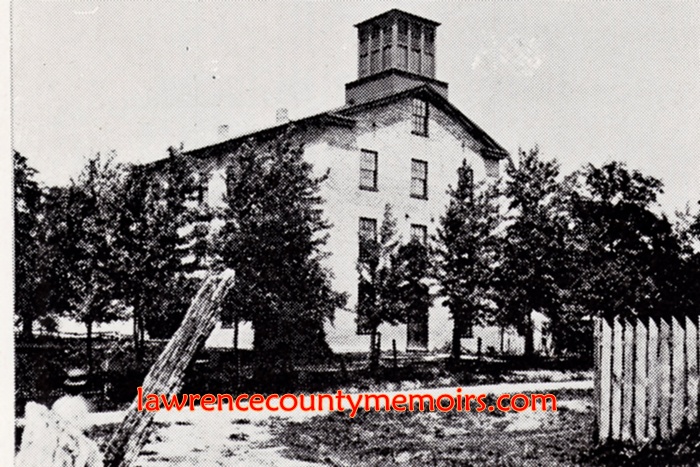 The expanded Geneva Hall building in Northwood. (c1875) |  A boarding house used by students of Geneva Hall in Northwood. (c1875) |
 An early football team from Geneva College. (1892) |  Another football squad from the school. (1896) |
 The first building erected on the new campus in Beaver Fall, known as Old Main, was opened in the fall of 1881. It was designed by architect James P. Bailey, who also designed the Butler County Court House that opened in 1885. (c1904) Full Size |
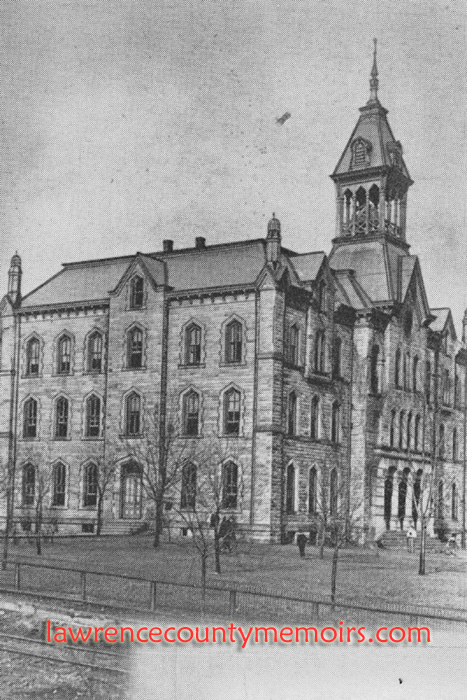 Old Main. (c1903) |  Old Main. (c1904) |
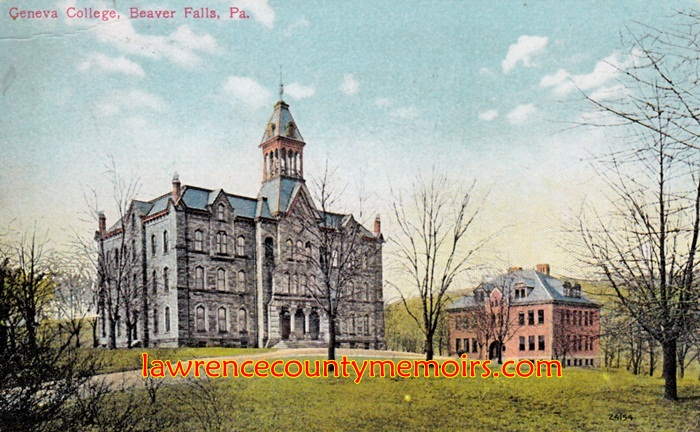 A view of Old Main and the old Science Building, which was lost to a fire in August 1912. (c1911) Full Size |
 (c1910) |  (c1904) |
 Johnston Gymnasium was built in 1911 and today is the second oldest surviving building on campus. (c1914) |
 McKee Hall opened in 1921 as a women’s dormitory. The lower level served as the main dining hall from 1921 until 1971. (c1930) |
 McCartney Library, designed by the New Castle-based architectural firm of W. G. Eckles, was dedicated on Monday, October 5, 1931. The Eckles firm also designed Johnston Gymnasium and McKee Hall and drew up the plans for the renovation of Old Main in 1935. (c1933) Full Size |
 Reeves Field was constructed in 1925 and named in honor of prominent local banker John T. Reeves. (c1940) |  Reeves Field. (c1940) |
 This and the following fifteen photos were taken by Geneva student J. Lawrence Coon during the 1939-40 school year. Full Size |
 (J. Lawrence Coon photo 1939-40) |  (J. Lawrence Coon photo 1939-40) |
 (J. Lawrence Coon photo 1939-40) |  (J. Lawrence Coon photo 1939-40) |
 (J. Lawrence Coon photo 1939-40) |  (J. Lawrence Coon photo 1939-40) |
 (J. Lawrence Coon photo 1939-40) |  (J. Lawrence Coon photo 1939-40) |
 (J. Lawrence Coon photo 1939-40) Full Size |
 (J. Lawrence Coon photo 1939-40) |  (J. Lawrence Coon photo 1939-40) |
 (J. Lawrence Coon photo 1939-40) Full Size |
 (J. Lawrence Coon photo 1939-40) |  (J. Lawrence Coon photo 1939-40) |






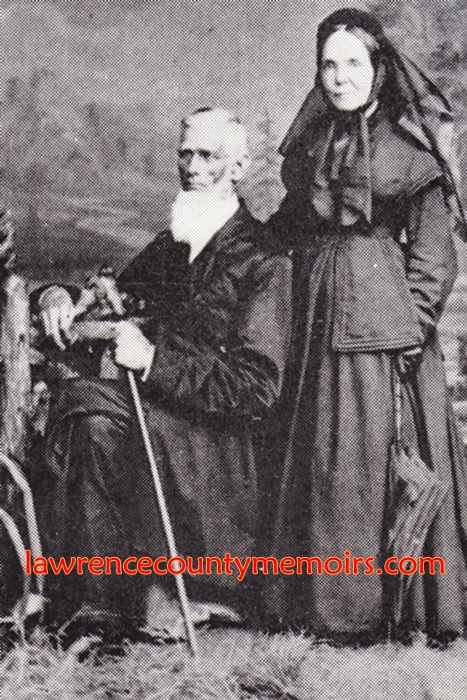


Comments
Chris Pavkovich #
Graduated in 1997. Great campus; despite being next to Route 18, the layout made Route 18 non-existent. My older sister swears Old Main’s basement was haunted.
Matt Mawhinney #
I loved my years at Geneva. So many people striving to be Christ-like made it a little slice of heaven, the way you’d hope people acted in the wider world. I remember pick-up games of football on the lawn in front of Memorial Hall. It’s also a beautiful campus – tree lined walks and broad grassy lawns. I’d relive those years again in a minute.
Comment